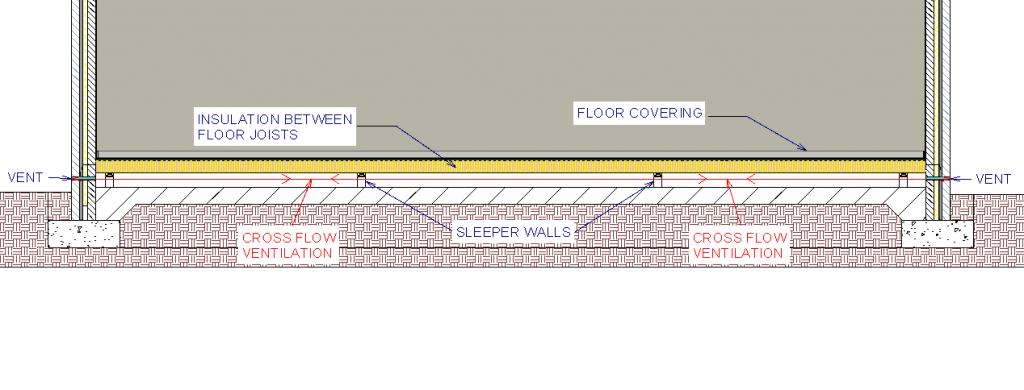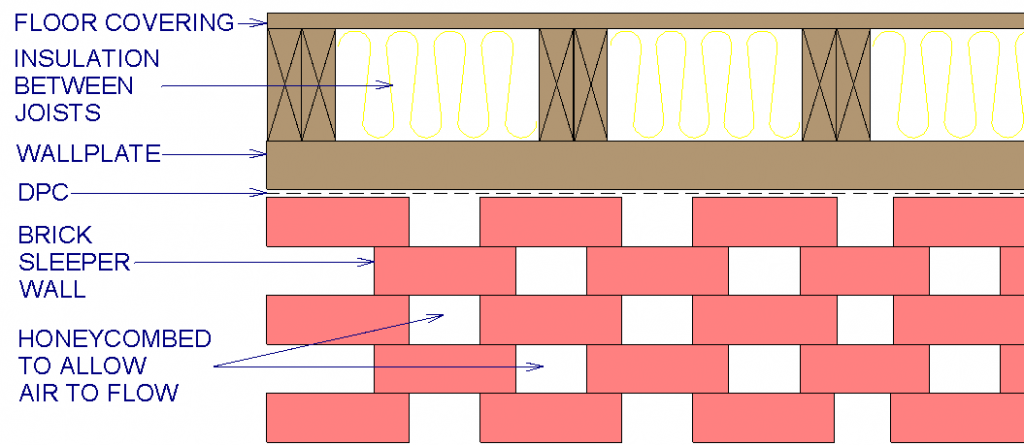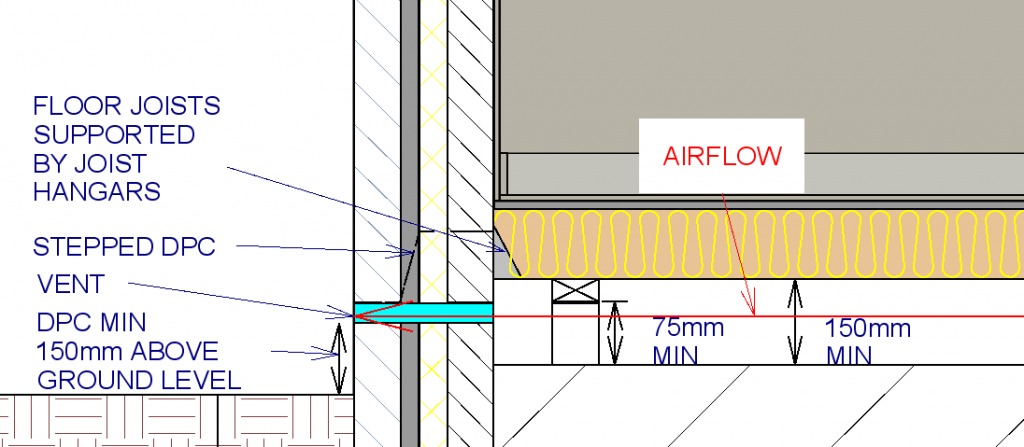Ventilation in floors, especially suspended timber floors is very important so as not to facilitate the build up of moisture within the floor structure. This moisture build up can cause deterioration not only the timber joists but also any coverings placed over the joists.
Ventilation in suspended timber floors can be achieved by installing vents below the joist level in opposite walls of the building and if possible on all sides of the building (see figure 1).

These vents must be enclosed to prevent air getting into the cavity of block wall construction. These vents will facilitate cross flow ventilation below the joists. Often these vents can be blocked, restricting the amount of ventilation being achieved. They can be blocked in a number of ways including, higher ground level outside, vegetation growing, footpaths and also builder’s rubbish/rubble left under the joists. Another common way these vents can be blocked is by an extension with a solid floor being built onto a property without providing proper access to the original vents. The recommended minimum area of ventilation required for under a suspended timber floor is 1500mm2 for every metre of perimeter of the structure.
Cross flow ventilation was traditionally achieved by placing sleeper walls (see figure 2) at intervals throughout the sub-floor. The sleeper walls would be honeycombed in nature to facilitate airflow. A damp proof course (dpc) was placed on top of this wall and then the wall plate and joists were positioned on this to reduce the chance of rising damp at this point.

With more modern construction joist hangars are used to support the timber members. The position of these can be seen in figure 3. Using joist hangars more free air space can be achieved in the sub-floor. The minimum space for this free air space can be seen in figure 3. There should be a minimum distance of 75mm to the dpc and 150mm to the underside of the timber joists.

Along with moisture build up, the lack of or sub-standard ventilation in timber floors can lead to a build up of gasses such as radon. With modern construction a radon barrier is installed to reduce the risk of such gasses building up. In older buildings even though there may not have been a radon barrier installed, the poorer standard of air-tightness would have allowed some of this gas to escape.
In older buildings it is important to check to see if there is adequate ventilation as this could be an indication that the floor members either have deteriorated or are deteriorating. Some signs of inadequate ventilation would include cupping of flooring/floorboards, doming of floors, general decay, odour and mould. Cupping occurs when the undersides of the floorboards absorb moisture and it will swell causing a concave effect to appear on the top of the floorboards. Doming occurs when there is excessive moisture present in the floorboards that have been left no room for expansion and they lift in a continuous curve. When the moisture dries in periods of prolonged dry weather the floorboards will normally return to normal.
To sum up floor ventilation is very important not only for the integrity and strength of a building but also for the health of its occupants. If any of the defects noted above are observed in your property then especially the lack of vents in outside walls (of timber floors) then there may be inadequate ventilation and remedial measures may have to be taken.

